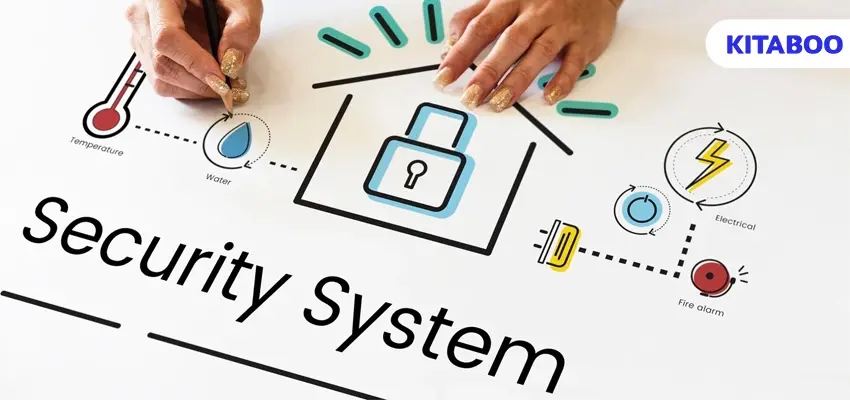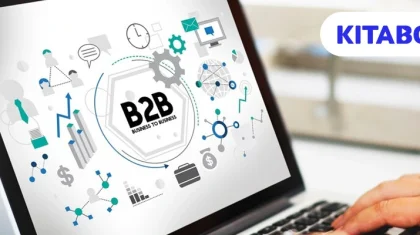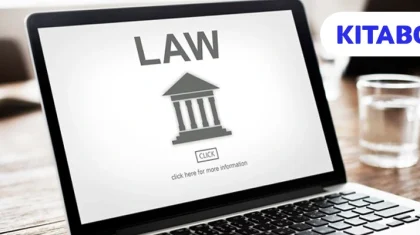
Data Security in Education: Balancing Accessibility and Privacy
Within the digital frame of education, while students get to explore through the bounds of knowledge and instructors with the use of powerful tools to personalize learning, concern for privacy and security breaches arises.
On one hand, accessibility flourishes while empowering students and educators alike. On the other, the specter of privacy concerns arises, prompting institutions and individuals for the need for cautious navigation.
Today, we will explore the need to balance accessibility with the imperative of protecting sensitive information for both K12 students and higher educational institutions equally.
Table of Contents:
- Education in the Digital Age
- The Need for Data Security Challenges in Education
- Building a Bridge of Trust: Secure Solutions for Institutions and Students
- Need to Championing Data Security with Cutting-Edge Features
- Importance of a Secure Learning Ecosystem
- Conclusion: Data Security Roadmap for Education
Education in the Digital Age
The digital revolution in today’s scenario has transformed education and the world of academics, offering students immersive learning experiences and educators various powerful tools to personalize their instructions. But this progress comes with a crucial concern on how to balance accessibility and privacy as well as ensuring that learning resources are readily available, while safeguarding sensitive student data.
Digital platforms have opened incredible doors, providing students with instant access to vast information repositories, interactive learning tools, and global connections. However, these opportunities simultaneously raise concerns about the vulnerable data that is enriched within.
Student names, addresses, academic performance, and even their browsing history can become valuable targets for hackers, identity thieves, or even malicious actors within the system. The fear of breaches and misuse causes anxiety and erodes trust, potentially hindering participation and engagement in the online platforms.
Striking the balance requires a delicate and well-established approach. It’s not about locking the gates and shuttering the windows but about implementing robust security measures. Imagine digital fortresses with strong encryption protocols, vigilant guardians in the form of access controls and audit trails, and drawbridges that raise only for authorized users.
For instance, in the higher educational digital space, digital textbook platforms like KITABOO can act as a catalyst for fostering collaborative and streamlined learning experiences while adhering to all IT policy requirements.
The Need for Data Security Challenges in Education
Educational institutions are often said to navigate a complex landscape of data security challenges. Data breaches and unauthorized access threaten students’ privacy, while malware and ransomware attacks can disrupt operations and incapacitate valuable learning resources for institutions and individuals.
Additionally, complying with the ever-evolving data privacy regulations like FERPA and GDPR further complicates the picture.
Thus, navigating this requires various proactive approaches, such as implementing robust measures for data security in education, fostering a culture of awareness, and investing in technology and expertise. Once these requirements are met, educational institutions can ensure that their digital educational enterprise remains a haven for learning.
Building a Bridge of Trust: Secure Solutions for Institutions and Students
Robust data security measures are no longer optional but essential for fostering a safe and thriving learning environment. Secure solutions benefit both institutions and students:
- Protecting student privacy: By safeguarding data against unauthorized access and misuse, institutions build trust and create a space where students feel secure to learn and explore.
- Compliance assurance: Meeting data privacy regulations protects institutions from legal repercussions and demonstrates a commitment to responsible data handling.
- Brand protection: Safeguarding student data preserves institutional reputation and strengthens the brand value in the competitive education landscape.
Enabling secure collaboration: Secure digital platforms, with granular access controls and data encryption, facilitate safe collaboration between students, educators, and other stakeholders.
Need to Championing Data Security with Cutting-Edge Features
Platforms that aim to provide additional security and support to empower educational institutions to prioritize data security are of utmost importance. It’s not just about ticking boxes for compliance, but it’s also about safeguarding the very foundation of trust and engagement within the learning ecosystem.
Here’s why cutting-edge features of data security in education are essential:
- Cybercriminals are constantly refining their tactics, targeting educational institutions for their rich trove of sensitive data.
Cutting-edge features such as advanced encryption protocols, threat detection algorithms, and real-time monitoring stay ahead of these evolving threats, providing a proactive shield against potential attacks.
- Student privacy is the cornerstone of a thriving learning environment. The fear of data breaches and misuse can erode trust between students, educators, and institutions, hindering engagement and participation.
Advanced features like granular access controls, permission management systems, and detailed audit trails demonstrate a commitment to responsible data handling, building a fortress of trust where sensitive information is protected with the utmost rigor.
Students working on group projects, educators sharing resources, and institutions connecting with international partners – all this necessitates secure data sharing.
State-of-the-art features like secure cloud infrastructure, role-based data access, and encrypted communication channels enable safe and seamless collaboration, unlocking the full potential of digital learning without compromising privacy.
Need to Championing Data Security with Cutting-Edge Features
Building a secure learning ecosystem for institutions and individuals requires a united effort, with both technology providers and educators playing crucial roles. Platforms and tools must prioritize data security in education by incorporating robust encryption, access controls, and audit trails.
They should also be compliant with relevant data privacy regulations like FERPA and GDPR. Therefore, open communication between providers and educators is the key. Providers should be transparent about their security measures and how they aim to collaborate with educators on best practices for secure technology use.
Educators set the tone for data security awareness within their arena of classrooms and schools. Therefore, it’s crucial for them to demonstrate responsible data handling practices, understand the importance of password hygiene, and educate students about online safety.
Data security in education should be integrated into the curriculum across various disciplines. This may include teaching students about cyberbullying, responsible online behavior, and the importance of
Students should also be active participants in building a secure learning ecosystem. They can further be encouraged to report suspicious activity, practice good password management, and advocate for data privacy within their communities.
Building a secure learning ecosystem requires a collective effort. Therefore, by working together, technology providers, educators, and students can create a safe and thriving environment where learning can flourish without compromising privacy.
Therefore, it’s crucial to derive a more detailed picture of the roles both technology providers and educators play in ensuring data security in education. It emphasizes the importance of continuous innovation, adaptation, and collaboration in facing evolving threats and embracing new technologies, especially by educational platforms.
Need to Championing Data Security with Cutting-Edge Features
In conclusion, developing a comprehensive data security roadmap for education is imperative to strike a balance between accessibility and privacy concerns. Implementing a robust cloud-based infrastructure can facilitate efficient operations, ultimately providing a competitive edge.
To enhance interactive learning, collaboration with innovative platforms like KITABOO is recommended, ensuring improved user experiences and positioning the institution as a leader in technological advancements. For more details on strengthening data security and adopting cutting-edge solutions, reach out to us at contact@kitaboo.com.
Discover how a mobile-first training platform can help your organization.
Kitaboo is a cloud-based platform to create, deliver & track mobile-first interactive training content.



